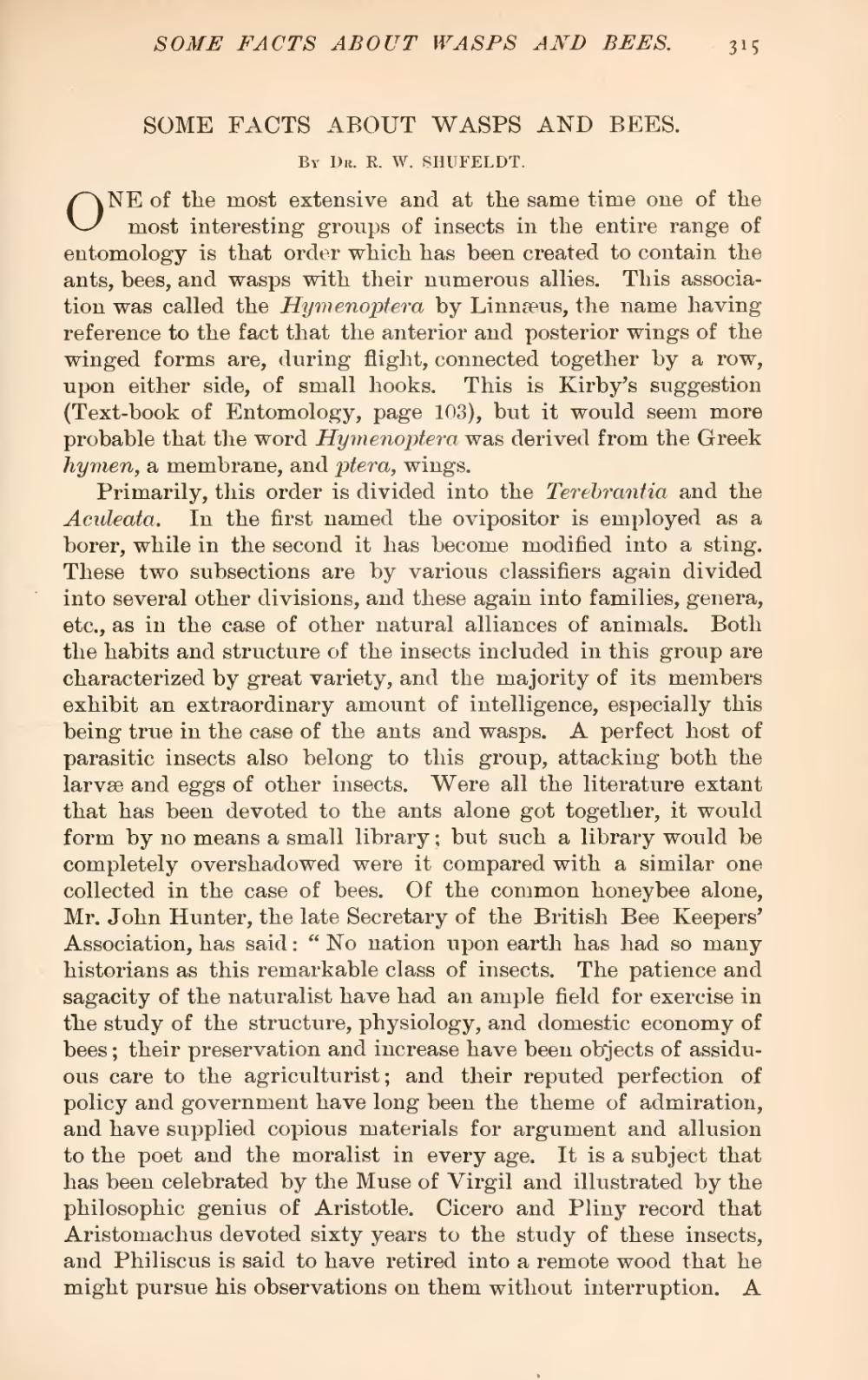| SOME FACTS ABOUT WASPS AND BEES. |
By Dr. R. W. SHUFELDT.
ONE of the most extensive and at the same time one of the most interesting groups of insects in the entire range of entomology is that order which has been created to contain the ants, bees, and wasps with their numerous allies. This association was called the Hymenoptera by Linnæus, the name having reference to the fact that the anterior and posterior wings of the winged forms are, during flight, connected together by a row, upon either side, of small hooks. This is Kirby's suggestion (Text-book of Entomology, page 103), but it would seem more probable that the word Hymenoptera was derived from the Greek hymen, a membrane, and ptera, wings.
Primarily, this order is divided into the Terebrantia and the Aculeata. In the first named the ovipositor is employed as a borer, while in the second it has become modified into a sting. These two subsections are by various classifiers again divided into several other divisions, and these again into families, genera, etc., as in the case of other natural alliances of animals. Both the habits and structure of the insects included in this group are characterized by great variety, and the majority of its members exhibit an extraordinary amount of intelligence, especially this being true in the case of the ants and wasps. A perfect host of parasitic insects also belong to this group, attacking both the larvae and eggs of other insects. Were all the literature extant that has been devoted to the ants alone got together, it would form by no means a small library; but such a library would be completely overshadowed were it compared with a similar one collected in the case of bees. Of the common honeybee alone, Mr. John Hunter, the late Secretary of the British Bee Keepers' Association, has said: "No nation upon earth has had so many historians as this remarkable class of insects. The patience and sagacity of the naturalist have had an ample field for exercise in the study of the structure, physiology, and domestic economy of bees; their preservation and increase have been objects of assiduous care to the agriculturist; and their reputed perfection of policy and government have long been the theme of admiration, and have supplied copious materials for argument and allusion to the poet and the moralist in every age. It is a subject that has been celebrated by the Muse of Virgil and illustrated by the philosophic genius of Aristotle. Cicero and Pliny record that Aristomachus devoted sixty years to the study of these insects, and Philiscus is said to have retired into a remote wood that he might pursue his observations on them without interruption. A
